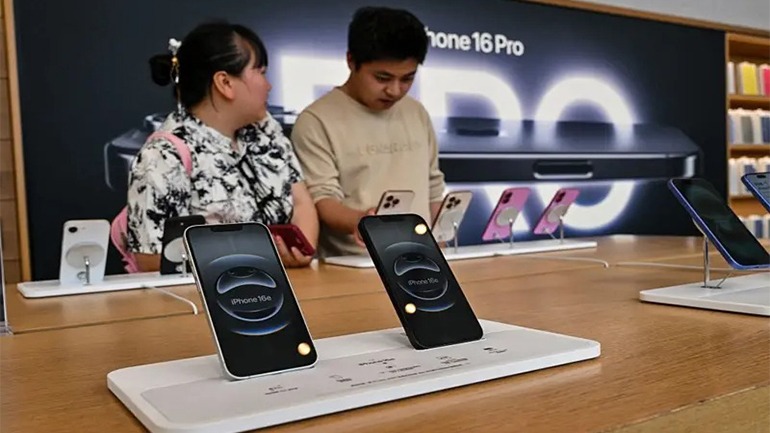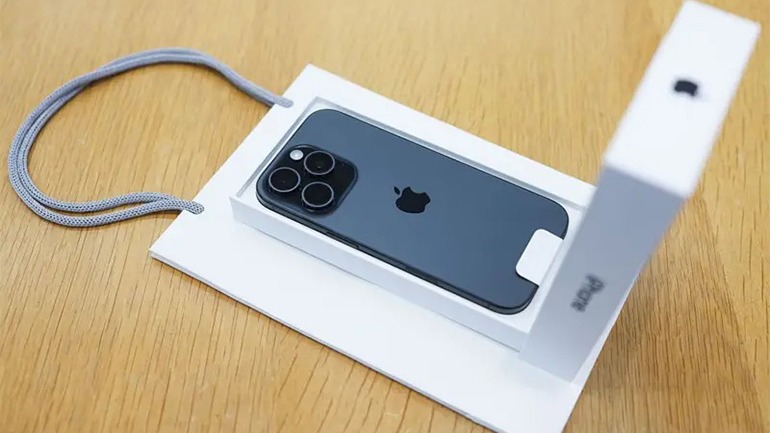

In the early hours of Saturday, April 12, the U.S. Customs Department quietly released a notice listing the codes or product numbers of items recently included in the U.S. Customs tariff exemption, following the 125% import tax imposed by the Trump administration in the context of the ongoing Trump China trade war on U.S.-China imports. One such code, HS code 8517.13.00.00, may seem insignificant to most countries, but the U.S. Customs database specifically refers to smartphones — now part of the smartphone tariff exemption. Including this code in the exemption list means that the U.S. has excluded smartphones — the single most valuable category of electronic imports from China last year — from the steep 125% import tax. In addition to smartphones, other electronic items like semiconductors (covered under the semiconductor tariff), solar cells (subject to solar cell import duty), and memory cards have also been exempted from the additional tariff, marking a broader quiet tariff reversal. Just days earlier, U.S. Secretary of Commerce Howard Lutnick, outlining his trade policy, had stated that the purpose behind the tariff hike on smartphones was to gradually support an iPhone production shift from China to the U.S. So, the sudden exemption of smartphones from the tariff came as an unexpected trade U-turn. What’s even more surprising is that this move was made with no prior public announcement.

It is worth considering what the consequences would have been for the United States if the exemption had not been declared for this very important export.
Most iPhones and related products are manufactured at Apple’s factory in eastern China, a critical part of the company’s global supply chain. The 125% import tax announcement had already begun to show its impact on Apple Stores in the U.S., reflecting the growing tension in the Trump-China trade war. According to global tech market research firm Counterpoint, 80% of Apple iPhones sold in the U.S. are manufactured in China, highlighting the depth of U.S.-China imports in the consumer electronics sector. Apple’s profit margin on its products is estimated to be between 40% and 60%, meaning if an Apple product sells for $100, the company earns a profit of $40 to $60 — a significant figure in the context of smartphone tariff exemptions. Had smartphones not been included in the U.S. Customs tariff exemption, the price of a standard iPhone model could have surged from $1,000 to as high as $2,000. While Apple had the option to pass on the cost to consumers, it raises the question: Would global buyers have accepted the burden of Trump’s additional tariffs? Although for now, a sharp price hike has been avoided due to the quiet tariff reversal, the risk remains. The earlier imposed 20% tariff on Chinese imports still applies, and smartphones have not been exempted from that, which means future price adjustments are still possible. In all of this, Apple CEO Tim Cook plays a pivotal role. Known for his supply chain expertise, Cook is among the few figures with access to both President Donald Trump and Chinese President Xi Jinping. It wouldn’t be surprising if Tim Cook steps in as a mediator to help resolve the ongoing U.S.-China trade dispute. Such a mediation effort would underscore Tim Cook’s strategic importance in maintaining the economic link between the U.S. and China — a factor that likely influenced Steve Jobs’s decision to appoint him as Apple’s CEO in the first place.
Matters related to the trade war are moving forward rapidly, showcasing a strategic U-turn in the Trump administration's approach. In the past two days, reports published in the U.S. press have claimed that Peter Navarro, the White House advisor overseeing trade issues for Trump, has been sidelined. Peter Navarro has been the key figure behind the imposition of tariffs on numerous countries around the world. His policy reconsideration marks a significant change in course in the decision-making process. In his place, U.S. Secretary of State Scott Bassett is now leading negotiations with America's trade partners. He is engaged in discussions with those partners who want to continue the 90-day temporary suspension of tariffs beyond its initial timeframe. However, after ten days of chaos, a major question arises: What does the U.S. have to present to other countries? The Trump administration is frightened by the global stock market’s response to the president’s trade plans and the status of U.S. debt as a safe investment for global investors. In an attempt to prevent bond yields from rising to 5%, the U.S. needs to strike more deals with new countries. The decision reversal regarding the tariff exemptions announced for smartphones and other products at the end of last week represents a surprising U-turn by Trump, illustrating the reevaluation of choices. According to Capital Economics, a quarter of all exports from China to the U.S. are now exempt from the 125% tariff. Capital Economics also notes that other major beneficiaries of the tariff exemption include Taiwan, Malaysia, Vietnam, and Thailand. Exports from Taiwan to the U.S. are now 64% exempt, from Malaysia 44%, and from both Vietnam and Thailand 30% are also now exempt.

The U.S. trade tariffs have seen multiple tariff exemptions, particularly for countries involved in electronics manufacturing. The new tariff is designed to provide an effective discount to those countries that export higher-value goods to the U.S. but import fewer goods from it. For example, Taiwan, with a trade surplus of $74 billion with the U.S., and Vietnam, with a Vietnam trade surplus of $124 billion, have both benefited from these changes. This shift contrasts sharply with the calculations made by Peter Navarro last week, who had originally advocated for stricter tariffs. Meanwhile, the U.K. trade deficit with the U.S. remains significant, standing at $12 billion, meaning the U.K. imports more goods from the U.S. than it exports. The 25% tariff on cars from the U.K. to the U.S. is still enforced, as cars remain the most significant export from the U.K. to the U.S., alongside pharmaceutical exports. Currently, the U.S. is engaging in trade negotiations with both the bond markets and its domestic strategies, with global attention focused on the next steps. The rest of the world is watching closely as these strategic tariff adjustments unfold, marking a crucial moment in U.S. trade strategy.
Powered by Froala Editor